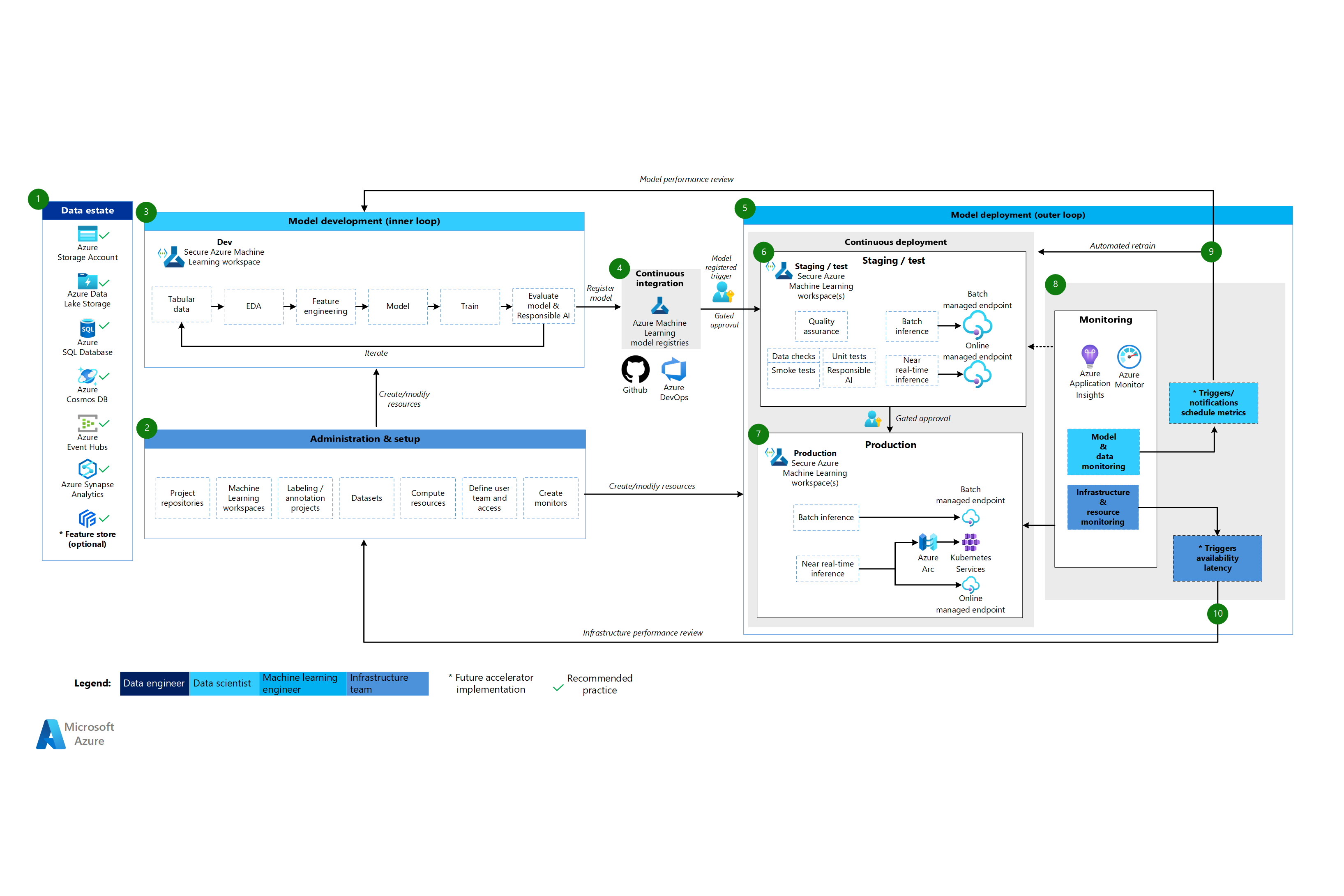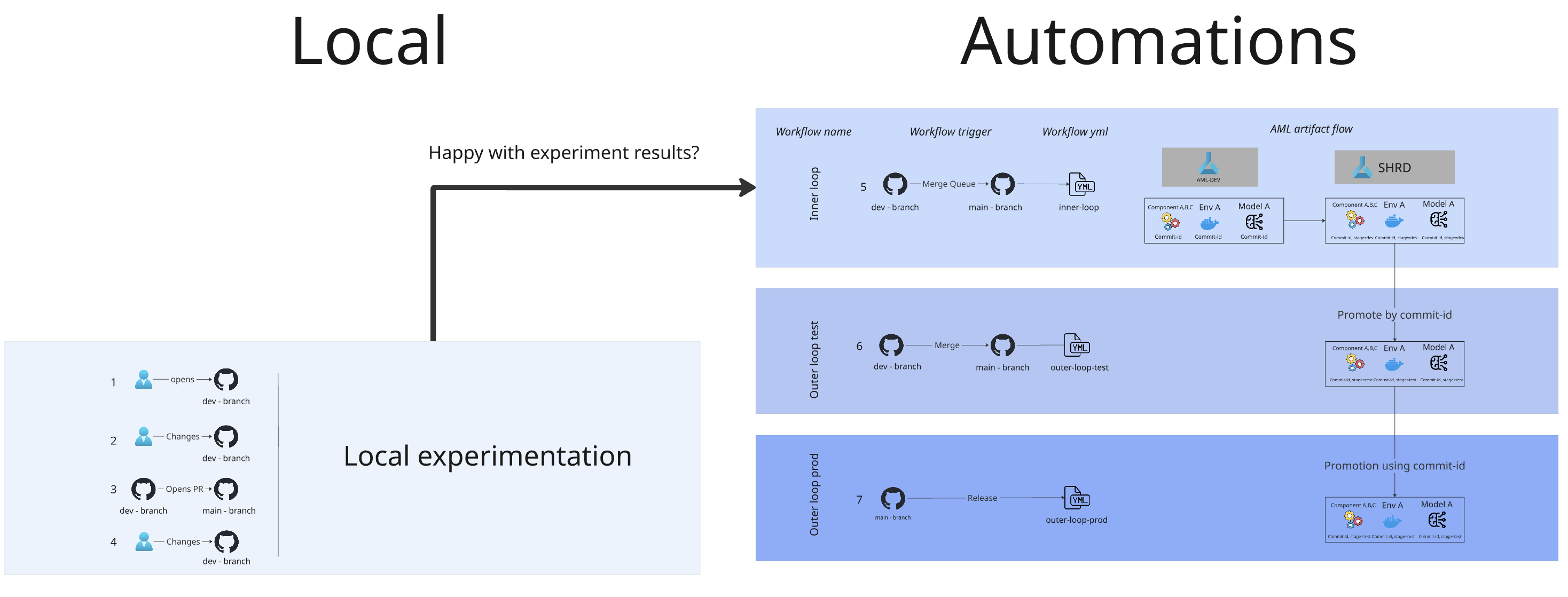Supported User Workflows
Lifecycle stages:
Managed Azure ML comes with a set of recommended user workflows that help data scientists move their models from idea to production in a structured, repeatable way. These workflows are designed to work out of the box, with guided steps for each stage of the process, while still allowing full customization to meet the needs of individual teams.
Inner loop vs outer loop
We will be mentioning the concepts of inner and outer loop throughout this documentation, so it’s important to understand their distinctions.
- Inner loop refers to the iterative process of developing and refining models, typically involving experimentation, feature engineering, and hyperparameter tuning. This is where data scientists spend most of their time, iterating quickly to improve model performance.
- Outer loop refers to the deployment and management of models in production, including validation, monitoring, and rollback. This is where models are prepared for real-world use, ensuring they meet quality and performance standards before being released to end users.
For those familiar with DevOps, you can think of the inner loop as similar to the development phase of software engineering, while the outer loop aligns with the deployment and operations phase.

Source: Microsoft MLOps architecture example
Supported Workflows
Managed Azure ML supports a range of workflows that cover both inner and outer loop activities, depending on your chosen architectural tier. Below is a table of the github automations / workflows which are relevant to each tier.
| Github workflow | Experimentation | Simple End-to-End | Full End-to-End |
|---|---|---|---|
| Inner loop | ✅ | ✅ | ✅ |
| Outer loop Prod | ❌ | ✅ | ✅ |
| Outer loop Test | ❌ | ❌ | ✅ |
| Python CI | ✅ | ✅ | ✅ |
| Model Rollback | ❌ | ✅ | ✅ |
Inner Loop Workflows
- Local development – The exploration and prototyping stage. This is where you might fix bugs, experiment with ideas, or test new components and pipelines. Speed of iteration is key here, so templates are provided to get started quickly. This speed comes with a trade-off in reproducibility.
- Inner loop promotion – When your model is working as intended, tag all model artifacts with a commit ID. This links every production-bound model state to a specific repository commit, ensuring full reproducibility. At this stage, the first GitHub automation is triggered.
Outer Loop Workflows
Outer loop workflows are optional and depend on your architectural tier:
- Outer loop test – Available in the full end-to-end tier. Promotes your model to a test workspace for extended validation before production.
- Outer loop production – The final step in both the simple and full end-to-end tiers. Promotes the model to production for serving.
- Model rollback – At any point, revert to a previous model version using commit IDs.
The GitHub workflows are identical across all tiers. Moving to a different architectural tier doesn’t require changes to the workflows themselves.
Complete Model Lifecycle

Model lifecycle in Azure ML with corresponding user workflows in Managed Azure ML
The diagram shows how these workflows connect to form a complete system, from experimentation through to production deployment.
Every team has its own ways of working. Managed Azure ML provides opinionated, proven workflows as a foundation. Adjusting triggers or workflow content is straightforward.
These workflows are designed to help you avoid common pitfalls, reduce administrative overhead, and focus on improving your models rather than managing infrastructure.
Documents available for this stage
📄️ Inner Loop (WIP)
Experimentation and training workflow
📄️ Outer Loop (Coming soon)
Model deployment workflow
📄️ Model rollback (Coming soon)
WIP: requires examples